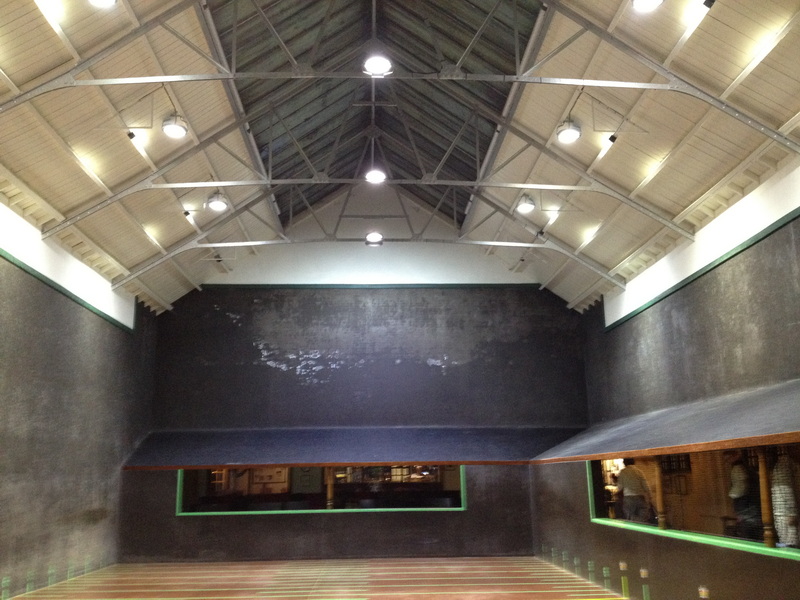Seacourt Tennis Club
Project Details
As a home to one of the 26 remaining real tennis courts still active in the UK measuring 30 x 12 metres with a high ceiling and sloping roof sections along three of its walls, the indoor court forms the centre piece of the Seacourt club. The court is in use daily from 0700 to 2100 hours. Manager Nick Jones explained “We’ve had high pressure sodium lights in here for years, but they were never ideal. Their yellow light is not good for seeing a yellow tennis ball travelling at up to 150mph and we had dark patches in the court where one light had failed, so it was time for a change.”
Seacourt reduce annual running costs by 67%.
Bespoke Lighting Design
After researching metal halides and T5 fluorescents as alternatives, Nick turned to LED lighting as a possible solution and on the recommendation icLighting Ltd, he agreed to trial some energy efficient LED high bay fittings. Nick was immediately attracted by the extended continuous performance guarantee and very low wattage which would enable him to comfortably recoup all of his cost through energy savings made within the guarantee period. “Another attraction is the instant-on ability of LED lighting. We tended to leave the HPS lights on all day because they took up to 15 minutes to re-strike. Real Tennis is a very fast game and players prefer to have as much light as possible, so with LEDs we could intorudce PIRs and save even more energy without cutting into the match time”.
With a mounting height of 7 metres, the 28 x HPS had been very energy-hungry but rather than swapping on a 1 for 1 basis icLighting modelled the court and realised that Seacourt actually only needed 22 x LED high bays luminaires to give an even better level of light without shadows. Seacourt were instantly able to dramatically reduce their energy consumption, carbon footprint, and a cost saving for the club whilst offering players a better experience.
Nick explained “We trialled 10 LED high bays against the existing mix of 250W and 400W high pressure sodium fittings running at 275W and 440W including drivers and as the advantages very soon became obvious, we decided to go all LED. The ruggedly built, solid state lights are highly robust unlike the T5s that would have needed an expensive maintenance regime and a cage or polycarbonate cover to survive the on-court punishment and prevent glass showering down on court from broken tubes. So not only do we get the energy saving, we’ll have no more expensive maintenance and dark patches to contend with. Not just that, the maintenance task, its assoicated disruption and cost have gone for good, so in the longer term the LEDs are cheaper than T5’s in both energy and maintenance.
A Positive Result
Alex Lancashire of icLighting noted “During installation we discovered that the actual consumption of the LED High Bay lights including drivers was 10% less than the expected 150W – an additional energy saving bonus, As a result, Seacourt’s Real Tennis court is now on target to cut carbon emissions further”.
Energy Usage (per year)
Running Costs (per year)
Carbon Footprint
The energy savings of 32.040 kWh translate to a reduction in the energy bill from £6,918 to just £2,279. Maintenance has been reduced to zero.









